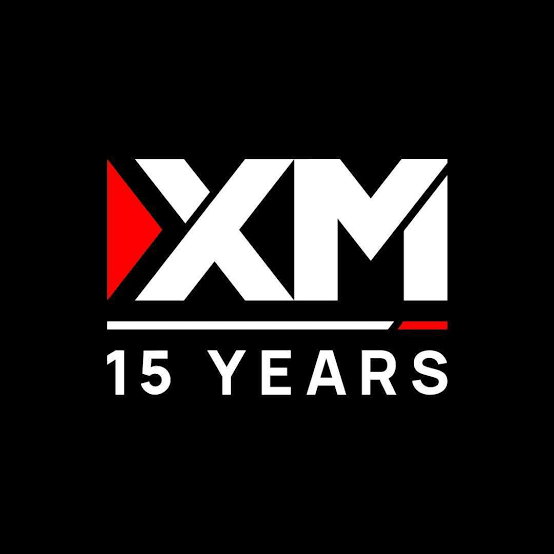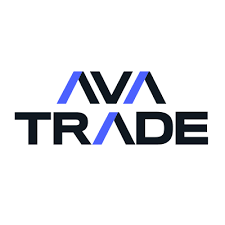Best Brokers for Beginners – Educational Framework
For new traders, the priority is education, safe practice, and repeatable routines. Choose brokers with stable platforms, clear order tickets, and accessible demo accounts. Keep risk tiny and learn mechanics before thinking about returns. Educational only.
Recommended Brokers 2025
Educational access and demo-first practice. No investment advice.
Table of Contents
- Recommended Brokers
- Introduction: Starting Your Trading Journey
- How to Select Your First Broker
- Mastering Demo Accounts
- Trading Platform Basics
- Beginner Risk Management
- Trading Psychology for Beginners
- Step-by-Step Learning Path
- Beginner-Friendly Broker Comparison
- Common Beginner Mistakes to Avoid
- Your First 30 Days: Action Plan
- Essential Educational Resources
- Broker Education Section
- Frequently Asked Questions
Introduction: Starting Your Trading Journey
Welcome to the world of trading! As a beginner, you're embarking on an exciting journey that requires patience, discipline, and continuous learning. The most successful traders didn't start by making huge profits—they started by learning how not to lose money.
What to Expect as a Beginner Trader
Your first few months should focus entirely on education and practice. Trading isn't a get-rich-quick scheme; it's a skill that requires time to develop. Expect to make mistakes, experience losses (even on demo), and constantly refine your approach.
Realistic Goals for Your First Year
| Timeframe | Primary Focus | Realistic Goals | What to Avoid |
|---|---|---|---|
| Months 1-3 | Education & Demo Trading | Learn platform, understand basic orders, develop routine | Live trading, complex strategies, large positions |
| Months 4-6 | Small Live Trading | Consistent execution, basic risk management, break even | Increasing position size, multiple strategies |
| Months 7-12 | Strategy Development | Refine approach, small consistent profits, manage emotions | Overconfidence, abandoning risk rules |
How to Select Your First Broker
Choosing the right broker is one of the most important decisions you'll make as a beginner. The ideal beginner broker prioritizes education, offers robust demo accounts, and provides an intuitive platform that won't overwhelm you.
Essential Features for Beginner Brokers
Platform & Usability
- Intuitive, user-friendly interface
- Clear order placement process
- Basic charting tools
- Mobile app availability
- Stable performance
Education & Support
- Comprehensive educational materials
- Video tutorials and webinars
- Demo account with realistic conditions
- Responsive customer support
- Beginner-focused content
Account Features
- Low minimum deposit
- No or low inactivity fees
- Fractional/micro lot trading
- Multiple base currencies
- Easy deposit/withdrawal process
Risk Management
- Negative balance protection
- Clear risk warnings
- Demo account limitations
- Leverage controls
- Automatic stop-loss orders
Red Flags to Avoid in Beginner Brokers
- Unrealistic promises: Brokers guaranteeing profits or minimal risk
- Poor regulation: Operating without proper licenses in your jurisdiction
- Hidden fees: Complex fee structures with unexpected charges
- Poor customer service: Slow response times, unhelpful support
- Platform instability: Frequent crashes, especially during volatile periods
- Pressure to deposit: Aggressive sales tactics pushing for large deposits
Mastering Demo Accounts
Demo accounts are your most valuable learning tool as a beginner. They allow you to practice trading with virtual money in real market conditions, helping you build skills without risking actual capital.
How to Use Demo Accounts Effectively
| Demo Phase | Duration | Focus Areas | Success Metrics |
|---|---|---|---|
| Platform Familiarization | 1-2 weeks | Navigation, order placement, chart basics | Execute basic trades without hesitation |
| Basic Strategy Testing | 2-4 weeks | Entry/exit timing, risk management, position sizing | Consistent execution of simple strategies |
| Advanced Practice | 1-2 months | Multiple timeframes, different market conditions | Profitable over at least 100 trades |
| Live Simulation | 2-4 weeks | Trading with real account size, emotional control | Maintain discipline through wins and losses |
Common Demo Account Mistakes
Trading Behaviors to Avoid
- Overtrading: Taking too many trades due to "play money" mentality
- Ignoring risk: Not using stop losses or proper position sizing
- Unrealistic size: Trading positions too large for real account
- No journaling: Failing to track and analyze demo trades
- Strategy hopping: Constantly changing approaches without testing
Best Practices
- Treat it as real: Use the same risk management as with real money
- Keep a journal: Document every trade with reasoning and outcome
- Use realistic size: Trade positions proportional to your intended live account
- Set goals: Define specific skills to master during demo period
- Review regularly: Analyze performance weekly to identify patterns
Trading Platform Basics
Learning to navigate your trading platform efficiently is crucial for success. While platforms may look complex at first, they all share common elements that become intuitive with practice.
Essential Platform Components
| Platform Element | Purpose | Beginner Tips | Practice Exercises |
|---|---|---|---|
| Price Charts | Visualize price movement over time | Start with candlestick charts, learn basic patterns | Identify 10 bullish/bearish candlestick patterns daily |
| Order Ticket | Place buy/sell orders | Practice market, limit, and stop orders on demo | Execute 5 trades daily using different order types |
| Trade Management | Monitor and modify open positions | Learn to modify stops, take profits, close positions | Practice moving stops to breakeven on winning trades |
| Account Window | Monitor balance, equity, margin | Understand how positions affect account metrics | Calculate position size for 1% risk on demo account |
| Market Watch | Monitor available instruments | Create watchlists for instruments you want to trade | Build and maintain a 10-instrument watchlist |
Basic Order Types Every Beginner Should Know
Entry Orders
- Market Order: Execute immediately at current price
- Limit Order: Execute at specified price or better
- Stop Order: Become market order when price reaches level
- Stop Limit Order: Become limit order when price reaches level
Exit/Protection Orders
- Stop Loss: Close position at specified price to limit losses
- Take Profit: Close position at specified price to secure gains
- Trailing Stop: Stop loss that follows price at fixed distance
- OCO (One Cancels Other): Pair of orders where one cancels the other
Beginner Risk Management
Risk management is the most critical skill for beginner traders. Proper risk control ensures you survive long enough to become profitable. The goal isn't to avoid losses entirely, but to ensure losses remain manageable.
Essential Risk Management Rules
| Rule | Description | Beginner Implementation | Why It Matters |
|---|---|---|---|
| 1% Rule | Risk max 1% of account per trade | Calculate position size before every trade | Survives 20+ consecutive losses |
| Stop Loss Always | Use stop loss on every position | Set stop when entering trade, never remove | Prevents catastrophic losses from single trade |
| Daily Loss Limit | Stop trading after losing 3-5% of account | Track daily P&L, stop when limit reached | Prevents revenge trading, emotional decisions |
| Leverage Control | Use conservative leverage (10:1 or less) | Start with 1:1 or 2:1, increase slowly | Reduces margin calls, allows time to learn |
| Position Limits | Max 2-3 positions open simultaneously | Focus on quality over quantity of trades | Prevents overexposure, maintains focus |
Position Sizing for Beginners
Proper position sizing ensures you never risk more than you can afford to lose on a single trade. Use this simple formula to calculate your position size:
Position Size Formula:
Position Size = (Account Balance × Risk Percentage) ÷ (Entry Price - Stop Loss Price)
| Account Size | Risk per Trade | Stop Loss Distance | Position Size |
|---|---|---|---|
| $1,000 | 1% ($10) | 50 pips | 0.02 lots (max loss: $10) |
| $2,000 | 1% ($20) | 40 pips | 0.05 lots (max loss: $20) |
| $5,000 | 1% ($50) | 25 pips | 0.20 lots (max loss: $50) |
Trading Psychology for Beginners
Trading psychology is often more important than trading strategy. Beginners must learn to manage emotions, maintain discipline, and develop the mental resilience needed to navigate market fluctuations.
Common Psychological Challenges
| Psychological Trap | Description | Beginner Symptoms | Solutions |
|---|---|---|---|
| Fear of Missing Out (FOMO) | Entering trades due to fear of missing moves | Chasing prices, entering without setup | Stick to predefined setups, accept missed opportunities |
| Revenge Trading | Trying to immediately recover losses | Overtrading after losses, increasing position size | Set daily loss limit, take breaks after losses |
| Confirmation Bias | Seeking information that supports existing view | Ignoring contrary signals, holding losing positions | Seek disconfirming evidence, follow stop losses |
| Overconfidence | Overestimating abilities after wins | Increasing risk, abandoning rules | Review trading plan regularly, maintain journal |
| Analysis Paralysis | Unable to make decisions due to overthinking | Missing entries, constant doubt | Simplify strategy, focus on high-probability setups |
Developing a Trader's Mindset
Mental Habits to Cultivate
- Patience: Wait for high-quality setups, don't force trades
- Discipline: Follow your trading plan consistently
- Objectivity: Base decisions on data, not emotions
- Resilience: Accept losses as part of the process
- Continuous Learning: Always seek to improve and adapt
Daily Mindset Practices
- Pre-market routine: Review plan, set intentions
- Trading breaks: Step away during slow periods
- Post-market review: Analyze performance objectively
- Mental reset: Clear mind between trading sessions
- Gratitude practice: Focus on learning, not just profits
Step-by-Step Learning Path
Following a structured learning path ensures you build skills systematically rather than jumping between concepts randomly. This step-by-step approach prevents overwhelm and ensures solid foundation building.
90-Day Beginner Learning Plan
| Week | Focus Area | Key Learning Objectives | Practice Exercises |
|---|---|---|---|
| 1-2 | Platform Mastery | Navigate platform, place orders, read basic charts | Execute 20 demo trades, practice order types |
| 3-4 | Market Basics | Understand currency pairs, market hours, volatility | Track 5 instruments daily, note price patterns |
| 5-6 | Risk Management | Position sizing, stop losses, risk-reward ratios | Practice calculating position sizes for 1% risk |
| 7-8 | Basic Analysis | Support/resistance, trend lines, candlestick patterns | Mark up 5 charts daily with technical levels |
| 9-10 | Simple Strategy | Develop and test a basic trading approach | Backtest strategy, then forward test on demo |
| 11-12 | Trading Psychology | Emotion management, discipline, journaling | Maintain detailed trade journal, review weekly |
| 13+ | Live Transition | Small live trading, performance tracking | Start with micro lots, focus on execution quality |
Beginner-Friendly Broker Comparison
We've evaluated brokers based on criteria that matter most to beginners: ease of use, educational resources, demo account quality, and customer support. Here's how the top beginner-friendly brokers compare.
Top 6 Brokers for Beginners (2025)
| Rank | Broker | Beginner Score | Best For |
|---|---|---|---|
| 1 | Deriv | 9.5/10 | User-Friendly Platforms & Education |
| 2 | XM | 9.3/10 | Micro Accounts & Customer Support |
| 3 | AvaTrade | 9.2/10 | Educational Resources & Platform Choice |
| 4 | HFM | 9.1/10 | Account Variety & Learning Materials |
| 5 | Exness | 9.0/10 | Low Minimum Deposit & Instant Execution |
| 6 | IC Markets | 8.8/10 | Raw Spreads & Platform Options |
Detailed Beginner Broker Comparison
| Broker | Minimum Deposit | Demo Account | Educational Resources | Customer Support |
|---|---|---|---|---|
| Deriv | $5 | Unlimited virtual funds | Extensive tutorials, webinars, trading academy | 24/7 live chat, email, comprehensive FAQ |
| XM | $5 | $100,000 virtual, no time limit | Video courses, live seminars, market analysis | 24/5 multilingual support, personal account managers |
| AvaTrade | $100 | $100,000 virtual, 21-day duration | Trading for beginners course, eBooks, video library | 24/5 support, callback service, dedicated support |
| HFM | $0 | $100,000 virtual, unlimited time | HFM education center, webinars, trading tools | 24/5 support, personal account managers |
| Exness | $1 | Unlimited virtual, no expiration | Training courses, trading manuals, analysis | 24/7 multilingual support, social media presence |
Why These Brokers Are Great for Beginners
Deriv – Offers multiple user-friendly platforms including Deriv Trader and SmartTrader designed specifically for ease of use. Comprehensive educational materials with step-by-step tutorials and a risk-free demo environment. Low minimum deposit makes it accessible for everyone.
XM AvaTrade – Multiple platform options including user-friendly WebTrader and mobile apps. Strong educational focus with structured courses for beginners. Regulated in multiple jurisdictions providing security for new traders. HFM – No minimum deposit requirement makes it easy to start. Comprehensive education center with tools and resources for skill development. Multiple account types to suit different beginner needs and trading styles. Exness – Very low minimum deposit and instant account opening. Unlimited demo account with no time restrictions. Simple and intuitive platforms suitable for complete beginners. Most beginners make similar mistakes when starting their trading journey. Being aware of these common pitfalls can help you avoid them and progress more quickly in your learning. Following a structured action plan for your first month ensures you build solid foundations rather than developing bad habits. This day-by-day guide focuses on skill development rather than profit generation. Quality educational resources can significantly accelerate your learning curve. The best beginner brokers offer comprehensive materials designed specifically for those new to trading. Perfect for beginners with user-friendly platforms and extensive learning materials. Zero minimum deposit with comprehensive education center for skill development. Most beginners need 2-3 months of consistent demo trading before transitioning to live accounts. You should be consistently profitable on demo for at least one month, have mastered platform navigation, and developed solid risk management habits before considering live trading. You can start with as little as $100, but $500-$1,000 is recommended for proper risk management. This allows you to trade micro lots while maintaining the 1% risk rule. Remember that your initial focus should be on learning, not profit generation. Risk management is the most critical skill for beginners. Learning to protect your capital ensures you survive long enough to develop other skills. Without proper risk control, even the best trading strategy will eventually fail. Quality matters more than quantity. Start with 1-2 hours of focused learning daily, including 30 minutes of market observation and 30 minutes of practice or study. Consistency is more important than marathon sessions. Forex is often recommended for beginners due to its liquidity, 24-hour market, and availability of micro accounts. Stocks can be good for longer-term approaches, while cryptocurrencies are highly volatile and generally not recommended for complete beginners. Always choose regulated brokers with strong reputations. Check for licenses from authorities like FCA, ASIC, or CySEC. Avoid brokers making unrealistic promises, offering guaranteed returns, or using high-pressure sales tactics. Research independent reviews and verify regulatory status directly with regulatory bodies. Look for intuitive navigation, clear order placement processes, educational resources integrated into the platform, stable performance, and good mobile app functionality. The platform should feel comfortable to use without being overwhelming. – Excellent customer support with personal account managers available for beginners. Micro accounts allow trading with very small amounts. Extensive educational resources including live seminars and video courses tailored for new traders.
Common Beginner Mistakes to Avoid
Top 10 Beginner Trading Mistakes
Mistake
Why It Happens
Consequences
How to Avoid
No Trading Plan
Impatience to start trading
Inconsistent results, emotional decisions
Create detailed plan before first trade
Ignoring Risk Management
Focus on profits over protection
Large losses, account blow-up
Always use stop loss, risk max 1% per trade
Overtrading
Boredom, fear of missing opportunities
Increased costs, poor decision quality
Set maximum daily trades, wait for setups
Revenge Trading
Emotional reaction to losses
Compounding losses, poor risk management
Set daily loss limit, take breaks after losses
Chasing Performance
Trying to replicate others' success
Unsustainable strategies, inconsistency
Develop your own approach, focus on process
Too Much Leverage
Desire for larger profits
Margin calls, amplified losses
Start with low leverage (10:1 or less)
No Trade Journal
Underestimating its importance
Repeating mistakes, no improvement
Record every trade with reasoning and outcome
Trading Too Many Markets
Belief that more opportunities = more profits
Lack of expertise, overwhelmed
Master 1-2 markets before expanding
Ignoring Fundamentals
Focus only on technical analysis
Caught by unexpected market moves
Check economic calendar, understand context
Unrealistic Expectations
Believing trading is easy money
Frustration, abandoning trading too soon
Focus on learning, not profits in early stages
Your First 30 Days: Action Plan
30-Day Beginner Action Plan
Days
Daily Focus
Key Activities
Success Measures
1-3
Platform Setup
Download platform, open demo account, learn basic navigation
Can navigate platform without hesitation
4-7
Order Practice
Practice all order types, understand execution
Execute 5 different order types correctly
8-14
Market Observation
Watch price action, note patterns, understand volatility
Identify basic price patterns in real time
15-21
Risk Management Practice
Calculate position sizes, practice stop placement
Consistently use proper position sizing
22-28
Strategy Testing
Test simple strategy, maintain trade journal
Complete 20 trades following defined rules
29-30
Review & Planning
Analyze demo performance, plan next steps
Identify 3 strengths and 3 areas for improvement
Daily Routine for Beginners
Pre-Trading (30 minutes)
Post-Trading (30 minutes)
Essential Educational Resources
Types of Educational Resources
Structured Courses
Interactive Learning
Reference Materials
Broker Education Section
Deriv
HFM
Frequently Asked Questions
How long should I practice on demo before going live?
How much money do I need to start trading?
What's the most important skill for beginner traders?
How many hours per day should I dedicate to learning?
Should I start with forex, stocks, or cryptocurrencies?
How do I avoid scams and untrustworthy brokers?
What should I look for in a beginner-friendly trading platform?




